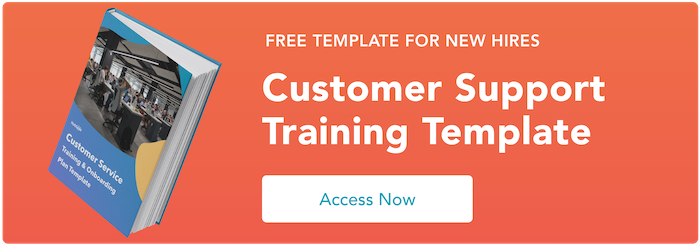Call Center Mental Health
Working in a customer support position can be fast-paced and high-pressure: You're monitored closely on performance, you have a tight schedule with back-to-back calls, and you're often dealing with frustrated or unhappy customers.
As a result, research has found call centers to have a negative impact on employees' mental health. For instance, one Cornell University study found 87% of call center workers report feeling "high" or "very high" stress levels in their workplace, while 77% reported "high" or "very high" personal stress levels.
Additionally, over half of call center agents said they felt emotionally drained, suffered sleep problems, felt burnt out, and were prescribed stress or anxiety-related medication because of their work.
As researcher Kristina Hultgren told Zendesk, "Call centre jobs are notorious worldwide for their high levels of turnover, absenteeism, employee burnout and emotional exhaustion. Agents are at constant risk of angry outbursts from customers, sexual harassment and outright abuse."
If you're still unconvinced, here are some statistics that demonstrate the severity of burnout in customer support.
Call Center Burnout Statistics
- 74% of call center agents are at risk of burnout. (Source)
- Turnover averages for the call center industry as a whole range between 30–45 percent — more than double the average for most other occupations. (Source)
- 87% of workers report high or very high stress levels at their call centers; and 77% report high or very high personal levels of stress. (Source)
- Over 50% of workers report that they feel emotionally drained from their work; used up at the end of the day; and burned out from their work on a daily basis. (Source)
- Over 50% report that they often to always experience sleep problems. (Source)
- Over 50% of call center workers report having been prescribed a medication to treat a stress or anxiety-related illness or condition — unusually high rates, considering anxiety disorders have been estimated to affect 19% of U.S. adults. (Source)
- 52% of agents who are at severe risk of burnout said their company is not customer-focused, and 41% of agents who are at severe risk of burnout said they don't feel empowered. (Source)
- In one survey of over 11,000 customer service workers, 27.4% reported experiencing emotional burden. (Source)
Call Center Burnout Signs
Now that we've uncovered the prevalence of call center burnout, let's explore a few signs that can help you determine if your customer support reps are experiencing burnout.
It's important to note — one of these signs on its own might not signify burnout. Instead, you'll want to monitor if you're observing multiple signs of burnout in one individual.
Burnout is something you want to take seriously. Burnout can lead to high turnover rates, a loss of productivity, and an overall decrease in team morale. Additionally, if your employees are burnt out, they won't be giving your customers the attention and care they deserve — which could lead to a negative customer experience, and decrease in customer retention rates.
All of which is to say: Managing burnout is critical for your business' bottom line.
Here, let's explore a few signs of burnout.
1. Fatigue
As your body experiences prolonged periods of stress — physically, mentally, and emotionally — it becomes less productive at handling that stress, resulting in constantly feeling fatigued and worn down.
One tell-tale sign of burnout, then, is exhaustion. If your employee seems less energetic and less engaged during meetings, it could be a sign they're experiencing burnout. If you suspect an employee is feeling burnt out, take note of their energy levels, particularly if they seem drastically different from how you've seen your employee behave in the past.
2. Increasing irritability or negativity
It isn't easy speaking with unhappy, frustrated, or angry customers every day, but most customer support reps are effective at handling difficult conversations. If you notice one of your reps is becoming increasingly irritated by colleagues or customers, it could be a sign they're burnt out.
While customer support reps will undoubtedly need to release their frustrations from time-to-time if they've had a negative experience with a customer, it's important to take note if these complaints drastically increase, or become about more minor details, since increased irritability is a sign of burnout.
Another sign of burnout is negativity. If your employee seems unhappy on the job and consistently complains or views most experiences through a negative lens, it could be because they're feeling burnt out from the job and need a release.
3. Absenteeism
Roughly 17% of those who have called in sick did so because they were tired, and 12% took time off due to work-related stress — all of which is to say, there's a strong correlation between absenteeism and and burnout.
If your employee is suddenly missing an unusual amount of work, it could be a sign of burnout.
An employee might be taking time off work because they're feeling unusually overworked, exhausted, or stressed. Additionally, prolonged periods of stress can cause a weakened immune system, so even if your employees are truly sick, you'll want to consider whether burnout is (even partially) the cause.
4. Performance/productivity decline
If your employee is feeling burnt out, they're not going to put as much effort into their work. They're tired, demotivated, and stressed out — which could result in poor performance.
If you notice an increase in careless errors or see your employee's performance declining, you'll want to determine the root cause. Your employee might be exhibiting poor performance due to burnout impacting their mental health, or burnout resulting in apathy towards their work.
An uptick in escalated issues or customer complaints could be a sign of employee burnout.
5. Decrease in motivation
Happy, engaged employees are more likely to go above and beyond in their roles — seeking out learning and development opportunities, speaking up in meetings, and upselling to customers during their daily customer interactions.
A burnt out employee, however, isn't going to feel motivated to go above and beyond. Instead, he or she will do the bare minimum to get by, and might seem frustrated about having to work at all. While it's normal to feel occasional stress or frustration on the job, if you notice your employee doesn't seem to be putting in the same effort she used to, it could be a sign of burnout.

Additionally, it's important to note — As of 2019, the WHO (World Health Organization) recognizes burn-out as an occupational phenomenon.
The WHO characterizes burnout by three dimensions:
- Feelings of energy depletion or exhaustion;
- Increased mental distance from one's job, or feelings of negativism or cynicism related to one's job; and
- Reduced professional efficacy.
As Erika Babat, Head of Support at CloudTalk, puts it, "Call center representatives are under constant pressure. Multitasking is their daily bread. In fact, burnout is the second highest risk agents face at work, with a probability of 74%. Make sure you treat employees with respect. Don't micromanage, support creativity, and ensure proper work conditions. Investing in quality call center software can be a great start."
Of course, the easiest way to reduce burnout is to avoid it in the first place. Here, let's explore a few tips from service reps and managers on how you can avoid call center burnout.
15 Strategies for Avoiding Burnout in Customer Support, According to Service Reps
1. Shift service reps' schedules to different channels each day, so no one spends all day on the phones.
One of the more tiring components of customer support is the requirement to have productive, engaging conversations on the phone all day long. Phone conversations require active listening skills, strong communication skills, and emotional intelligence — all of which can drain a support rep's energy and cause burnout.
Fortunately, Brynn Gaeta, a Team Lead for Support QA and Development at Dialpad, has a solution for this. She says, "To prevent burnout, our agents' daily schedules shift between different live channels (email, chat, and phones) within our contact center. That way, no one is on phones all day long."
If you offer different forms of customer support (through chat, email, or phone), consider how you might encourage reps to diversify which channels they use throughout the day — this can minimize the burnout some reps feel after back-to-back phone calls.
Gaeta adds, "We also try to be conscious of knowing when a mental break is needed and constantly encourage our agents to speak up when they need to step away for a few minutes to re-center themselves."

2. Know when to close the computer.
One of the great things about customer support is that, once you leave the office or walk away from your home office, you can turn your work brain off. While some cases may take some additional digging or some crisis work, know when to let a case mellow. If you're constantly in your cases, what you've tried and what you haven't will blur together, and you can increase the likelihood of missing something. Revisiting the case again the next morning with fresh eyes and a rested mind can do wonders -- and the customer can wait.
Odds are, they don't want to be thinking about their to-do list after hours, either. Additionally, remove email notifications from coming through on your phone and mute Slack during off hours. You won't be tempted to peek, and fewer notifications will help you feel less busy.
When you do set aside some time to get away, prepare before vacations by making it easy for a few team members to watch your cases -- close what you can, make notes, delegate, and when you're off, be off. Don't be the rep who brings your laptop on vacation.
3. Stay focused on the task at hand.
Ian Maclean, Head of Customer Care at Aircall, told me, "When it comes to preventing burnout, I have two main strategies that I turn to. The first is making sure my team can take the time off they need, so they can truly disconnect and feel refreshed."
He adds, "The second strategy is encouraging reps to really focus on the task at hand, so they're not overwhelmed by all the alerts, tickets, and messages in the background. The work will always be there, so staying focused is key."
Additionally, implementing powerful customer service tools — including ticketing software, knowledge base software, live chat software, and a universal inbox — can help you create a streamlined process so your reps can use their time most effectively.

4. Chunk your day into manageable pieces.
Support days can be long, and thinking about hitting case quota for the day while looking at all your follow-up from the day before can be daunting.
Split your day into hour-long, or half-hour long sections and set small goals for each of them. Taking one case every half hour sounds a lot easier than taking 14 in seven hours. It also helps you pace yourself so you're not front-loading or back-loading your day.
When you plan your day out each morning, make sure to give yourself some follow up time that's not your lunch break. This allows you to power through those responses without worrying about anything new coming in. Whittling down your inbox can do wonders to your sanity, and will help you prioritize cases as new information rolls in.
5. Take micro-breaks, and don't work through lunch.
HubSpot's Customer Support Specialist Tessa Dowd says she consistently reminds herself to take breaks throughout the day to avoid burnout.
As Dowd puts it, "One thing I do is hold myself accountable to micro-breaks and not working through lunch or vacation time. I set a goal and say I will accomplish this much, or in 2 hours from now, I will take a break. That way, even if I'm not getting ahead of work, I'm still taking breaks that help me stay focused throughout the day."
HubSpot Customer Support Specialist Richard Younger agrees, telling me, "One of the best ways to tackle burnout is to take control of your calendar. Setting literal meetings for yourself in tools like Google Calendar — or just reminders to get up and walk around — are a great start."
Science supports this. For instance, in his book Two Awesome Hours: Science-Based Strategies to Harness Your Best Time and Get Your Most Important Work Done, Josh Davis writes, "Staying on task without a break and working longer hours are wonderful solutions for a computer or machine. But … We are biological creatures. Continually demanding one kind of work — and a consistent level of effectiveness — from our brains is like continually demanding the same speed from a runner under any circumstances."
Breaks can ultimately help your body re-charge and work better for longer periods of time. So the next time you think, I have to finish this, and then I can take a break, pause to consider whether taking a break could actually help you finish it faster.
(For more on this, take a look at the blog post, The Key to Productivity Isn't Your Mind, It's Your Body.)
6. Set a distant, but attainable goal for the future.
In addition to setting small daily or weekly goals, setting a professional goal for yourself is going to be paramount in any position you have, and it's no different in support.
Whether you're gunning for a position in Product after a year, or looking to hit a certain yearly metric, make a plan and write it down. Setting your sights on something a little beyond your current role will help motivate you to get through the grind. It will also show motivation and company-mindedness, which look really good come the time to move up or make a lateral movement in a new department.
Not setting a goal like this can increase the likelihood of early burnout, because you're preoccupied with where you are now. It also helps you stay adaptable and aware of what's happening in your organization. It's extremely difficult to drive a car when staring at the hood, and work is the same.
Keep an eye on the horizon, and you'll be ready for any changes that come your way.
7. Set times at beginning and end of day to intentionally manage specific conversations.
HubSpot Support Specialist Richard Younger told me he sets specific times at the beginning and end of each day where he can intentionally manage specific conversations.
As he puts it, "[Setting time at the beginning and end for specific conversations] ensures you have a clean frame of mind going into your day, or finishing the day."
"Allowing yourself that breathing room before the start or end of the day also allows for the decompression of your mental state, and therefore a more fruitful transition into your next phase of your day."
For instance, Younger starts each morning by completing easy steps to get things done on the checklist — which leaves him with more room to manage more difficult customer interactions later in the day.
Then, at the end of each day, Younger manages follow-up from the past few days, or gets a head start on another important task for later in the week. This helps ensure he can start each day fresh and clear-headed.
8. Take time to yourself, at work and at home.
Customer support requires a lot of mental and emotional presence throughout the day, especially on the phone. All that constant extroversion can wear you down, so make sure you take time to be quiet and be in a quiet environment.
Giving yourself tiny breaks throughout the day can help you take a mental power nap, and help motivate you toward your next task. Go outside and take a lap around the block after a tough call with a customer, or stop by a friend's desk for a quick chat.
After a long day at work, unwind. Watch an episode of your favorite show while you wait for the oven to preheat, or read a good book before bed -- give yourself something mindless and fun.
9. Dissipate stress in your muscles after a stressful call.
Lisa Mulhaire, a HubSpot Customer Support Specialist, told me she focuses on dissipating stress from her muscles after stressful calls.
She says, "When we experience a stressful or upsetting situation, our body hold tension as our muscles prepare for a fight-or-flight response."
"If you are being hunted down by a tiger, you are able to dissipate this energy by running away. But in the modern world, we don't get the opportunity to burn off this energy and tension after a stressful situation."
"We're just left sitting with this tension in our muscles, which can lead to things like headaches, jaw pain, neck pain, etc. Taking two minutes after a stressful interaction to burn off some of this energy can really help. Two minutes of air punching, running on the spot, jumping jacks, etc. will help dissipate the cortisol in your system, allow you to take a few deep breaths, and head into your next call feeling recharged."

10. Spend time with your coworkers off the clock.
Make an effort to get to know the people in your office, or at your company if you work remotely, and make plans to hang out outside of work. In customer support, your coworkers are your lifeline, and forming relationships with them that aren't just about cases will help you feel more grounded in the office, and help you get excited to come into work. Even the occasional gripe about a tough case over a beer is great way to share knowledge and get fresh perspective (on work and on life).
It also helps fill the need for face-to-face interaction in the workplace. Sometimes, it's easy to plug in your headphones and crank out email after email, but talking with another person in person will help you stay present and emotionally intelligent.
11. Fight off monotony by switching up your schedule.
If you can, work from home once a week, or just one morning a week to give yourself that extra hour of sleep you so desperately need and help you stay relaxed on calls. Switching up the environment like this will also help your workflow stay limber and efficient, and keep your week from getting boring.
That goes for off the clock too. Go to a new part of town, take a new route home, or read a new book. Even if it's just the bare minimum, it will trick your brain from thinking your day is going to be predictable, and will keep yourself wondering "what will happen next" during off hours instead of "what will the customer say next."
If you need some help deciding what workflow structure works best for you, find out what motivates you first, and customize from there.
12. Take on side projects — personal or professional.
Once you feel ready for additional responsibilities, take up a project you feel passionate about at the company. This will help you get your foot in the door to other departments, while adding a new, fresh element to your day that you get to control.
Having something that you feel is personal to you, like planning an event, writing a blog post, or mentoring new team hires will help you feel a new sense of belonging and will help you step outside of your day-to-day.
Speaking of, working on something that's just for you can be a great way to stop your passions from atrophying. Work on that novel piece by piece, complete a puzzle, paint, or do whatever else makes you happy. And completing a good-sized project outside of work will help you feel well-rounded., too.
13. Take care of your mind and body.
The life of a customer support rep can get a bit stagnant due to a lot of desk work and sitting. This can be bad for your physical health, which can then affect how you feel mentally. Headaches, backaches, and lethargy are all big symptoms of desk jobs in general.
Taking time to move and stretch will do wonders for your posture, which will keep that discomfort from creeping in. Try a standing desk, or maybe an exercise ball instead of a chair. There are even a few cool balance boards to use while you stand at your desk (if you're coordinated).
You can also hit the gym. We know, we know -- sometimes you're just too busy. Whether it be going to biweekly boxing classes with some friends from work, cutting your commute in half via a bike, or even just taking a walk, exercising keeps your mind sharp. It's also just a great way to blow off steam.
14. Keep a record of every piece of positive feedback you get.
Last, but certainly not least, keep your positive feedback. Make a "brag journal" where you can paste in your positive feedback from customers, coworkers, and managers. You can add personal feedback as well.
Make sure to take a look at it every once and a while to remind yourself that you can do this and have been doing this for some time now. It can also remind you that customers are people too, and they really do appreciate the work you do to help their business. You're literally helping their company be successful, which is very cool.
This is also a great thing to have on hand for moving up in the company, when discussing compensation, or for performance reviews. If you have it ready, you don't need to go digging through your cases for examples of when you did some killer work for your customers -- you can just put it right where you need it to go.
Whether it be all of these or one of these, make sure to start implementing early on. This will prevent burnout from coming in by setting you up with a rock-solid workflow that can stand the test of time. It'll also help you have some fun, too. But, if you do start feeling burnt out at work, talk about it! These things happen to everyone. Partner with your more senior teammates, or even your manager, right away to come up with a strategy that makes the most sense for you, and is best for your customer and your team. Don't worry -- you got this.
15. Acknowledge you're human, and you're doing the best you can.
Above all else, burnout happens when you put the pressure on yourself to perform optimally at all times — or when you self-criticize after a difficult conversation, and internalize that negativity.
Sometimes, you can dissipate burnout by simply speaking kindly to yourself and acknowledging you're doing the best you can.
As Garance Copp, Customer Care Specialist at Aircall, told me, "To avoid feeling overwhelmed at work — especially if there is a lot of work within an understaffed team — I like to reflect on the fact that I'm doing the best I can, and that there is only so much a human being can handle. This helps me get over my imposter syndrome, as well!"
To learn more about developing your customer support career, check out these customer support resources.
.png?width=112&height=112&name=Image%20Hackathon%20%E2%80%93%20Vertical%20(37).png)











